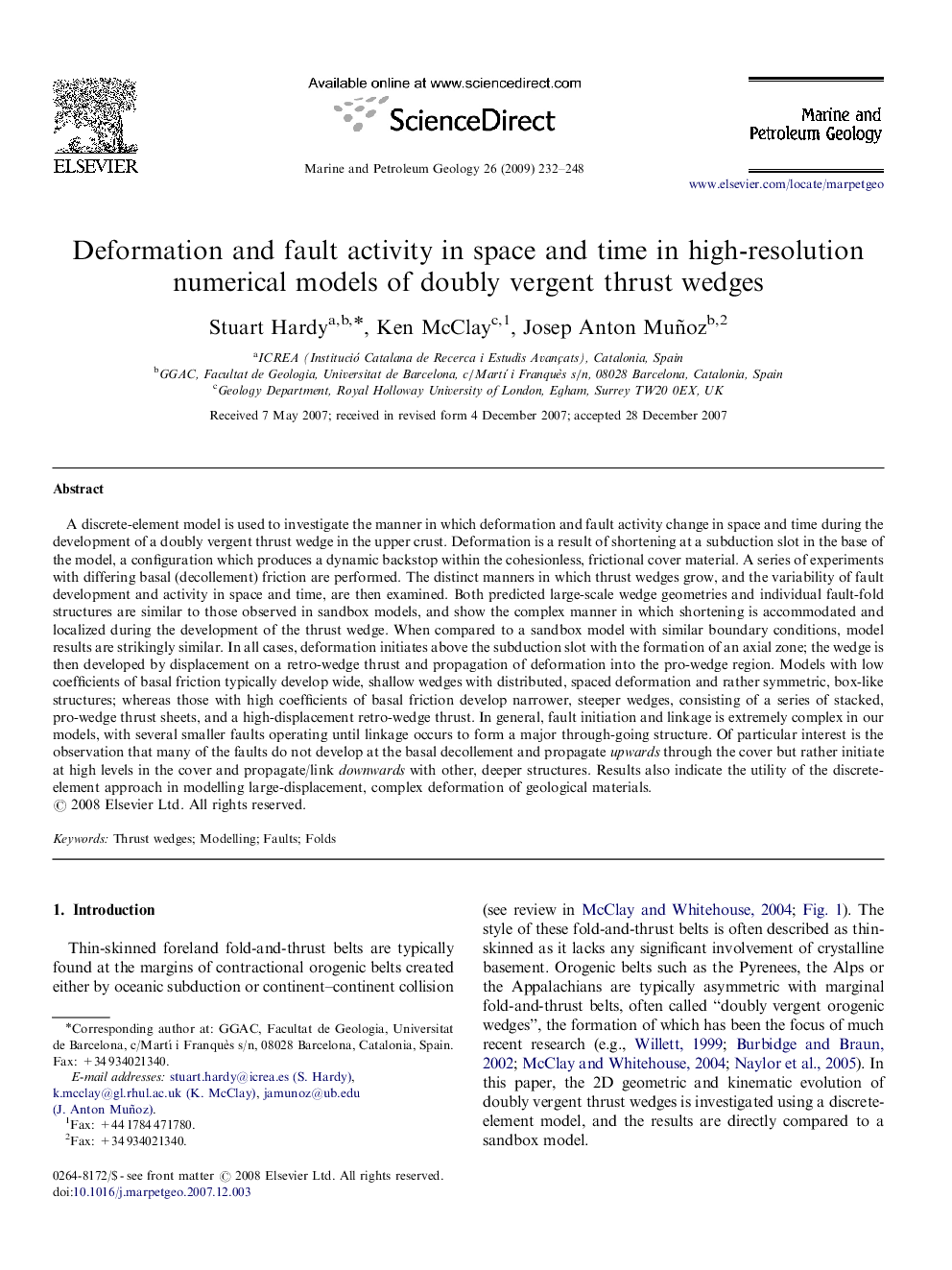| کد مقاله | کد نشریه | سال انتشار | مقاله انگلیسی | نسخه تمام متن |
|---|---|---|---|---|
| 4696304 | 1351666 | 2009 | 17 صفحه PDF | دانلود رایگان |

A discrete-element model is used to investigate the manner in which deformation and fault activity change in space and time during the development of a doubly vergent thrust wedge in the upper crust. Deformation is a result of shortening at a subduction slot in the base of the model, a configuration which produces a dynamic backstop within the cohesionless, frictional cover material. A series of experiments with differing basal (decollement) friction are performed. The distinct manners in which thrust wedges grow, and the variability of fault development and activity in space and time, are then examined. Both predicted large-scale wedge geometries and individual fault-fold structures are similar to those observed in sandbox models, and show the complex manner in which shortening is accommodated and localized during the development of the thrust wedge. When compared to a sandbox model with similar boundary conditions, model results are strikingly similar. In all cases, deformation initiates above the subduction slot with the formation of an axial zone; the wedge is then developed by displacement on a retro-wedge thrust and propagation of deformation into the pro-wedge region. Models with low coefficients of basal friction typically develop wide, shallow wedges with distributed, spaced deformation and rather symmetric, box-like structures; whereas those with high coefficients of basal friction develop narrower, steeper wedges, consisting of a series of stacked, pro-wedge thrust sheets, and a high-displacement retro-wedge thrust. In general, fault initiation and linkage is extremely complex in our models, with several smaller faults operating until linkage occurs to form a major through-going structure. Of particular interest is the observation that many of the faults do not develop at the basal decollement and propagate upwards through the cover but rather initiate at high levels in the cover and propagate/link downwards with other, deeper structures. Results also indicate the utility of the discrete-element approach in modelling large-displacement, complex deformation of geological materials.
Journal: Marine and Petroleum Geology - Volume 26, Issue 2, February 2009, Pages 232–248